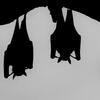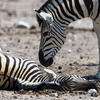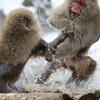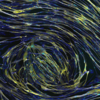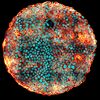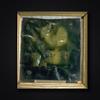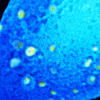You are here
20 science pictures to catch your eye
11.10.2022, by
The 2022 edition of the LPPI “Proof in Images” competition is here. Discover these winning photos from research, organised by the CNRS with Acfas, its Canadian partner. You can vote for your favourite photo until November 30.
View all the photos and vote for the public's prize: https://www.concours-preuve-image.fr/
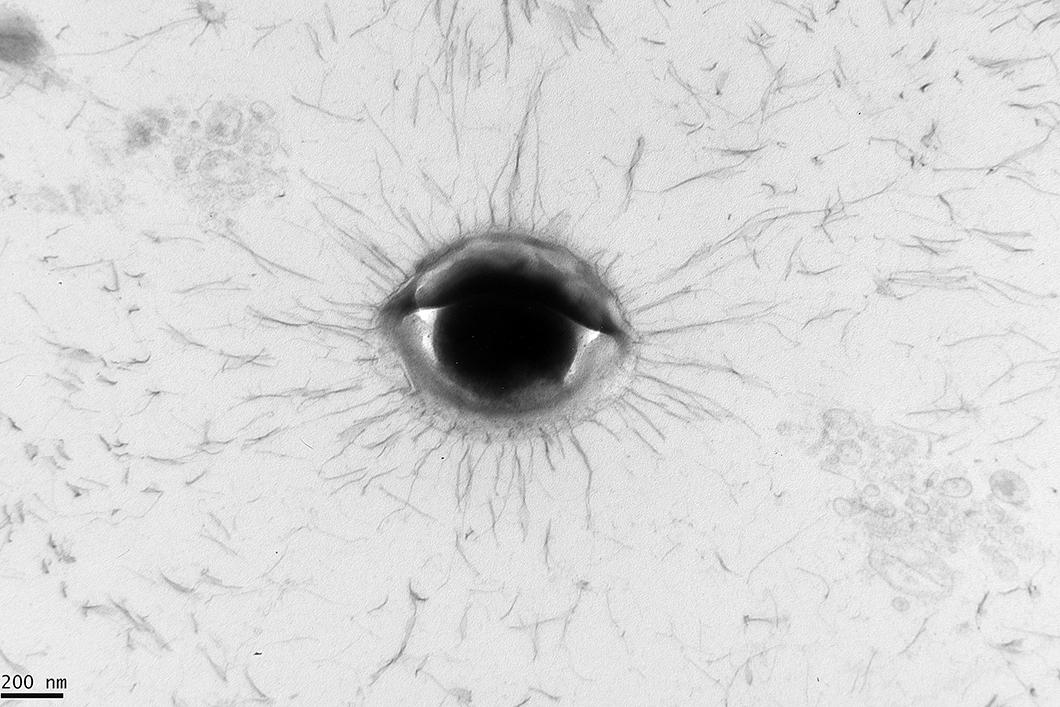
1
Slideshow mode
This bacterial spore is found, together with many of its conspecifics, in wheat straw cells in cow manure. When stored dry, it no longer forms a life-friendly environment, and some bacteria resist by going dormant and becoming spores, while waiting for more favourable conditions. Then, once the manure is rehydrated, the bacteria start breaking down organic matter again, thus helping to increase the fertility of the soil on which it is spread. Understanding the dynamics of microorganisms in soil improvers like manure is vital, and although microorganisms may be nothing like as big as a Cyclops, they nonetheless play a giant role in ecosystems.
F. Watteau, Th. Morvan/OTELO
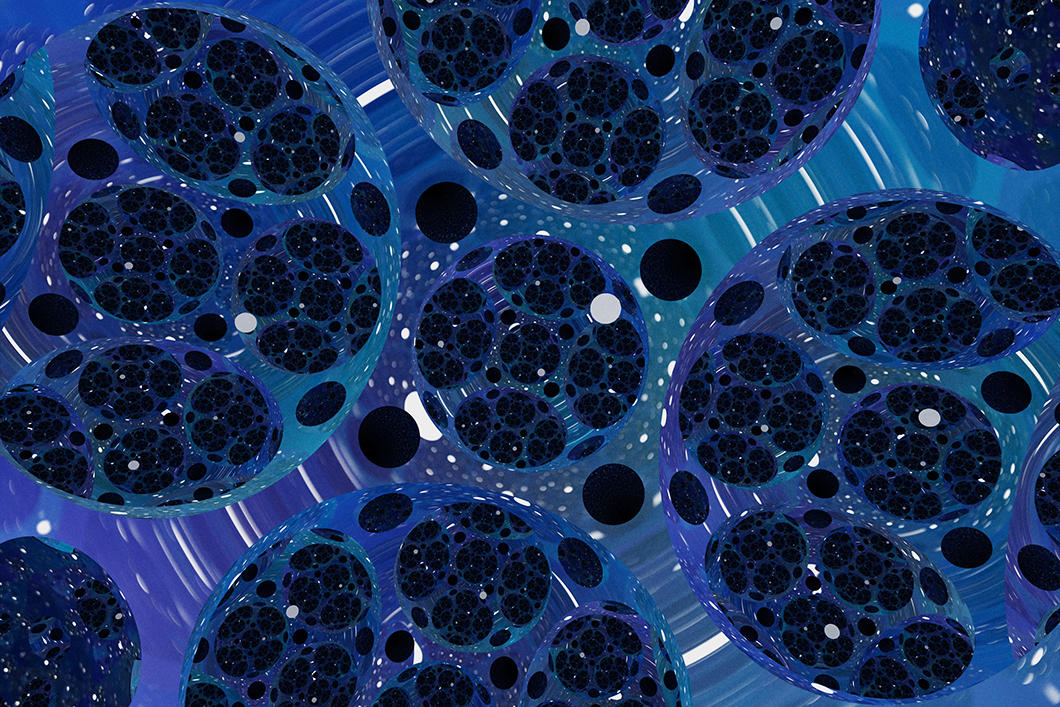
2
Slideshow mode
Hyperbolic geometry, introduced in the nineteenth century, is a mathematical field that has profoundly transformed the way geometry has been taught since antiquity. In this space with unusual properties, light does not travel in a straight line but along geodesics, the shortest curves between two points, thus altering our visual perception of the world. Scientists have developed an application that simulates in real time what the “inhabitants” of such a universe would see. The image features a three-dimensional, finite volume, hyperbolic manifold, lit by a luminous globe. The ultimate goal of this project is to decipher the properties of such spaces. And to open a window onto an imaginary world sketching out the outlines of a science that can sometimes seem abstract.
R. Coulon-Irmar/S. Matsumoto-Georgia Tech/ H. Segerman-OSU/S. Trettel-Stanford University
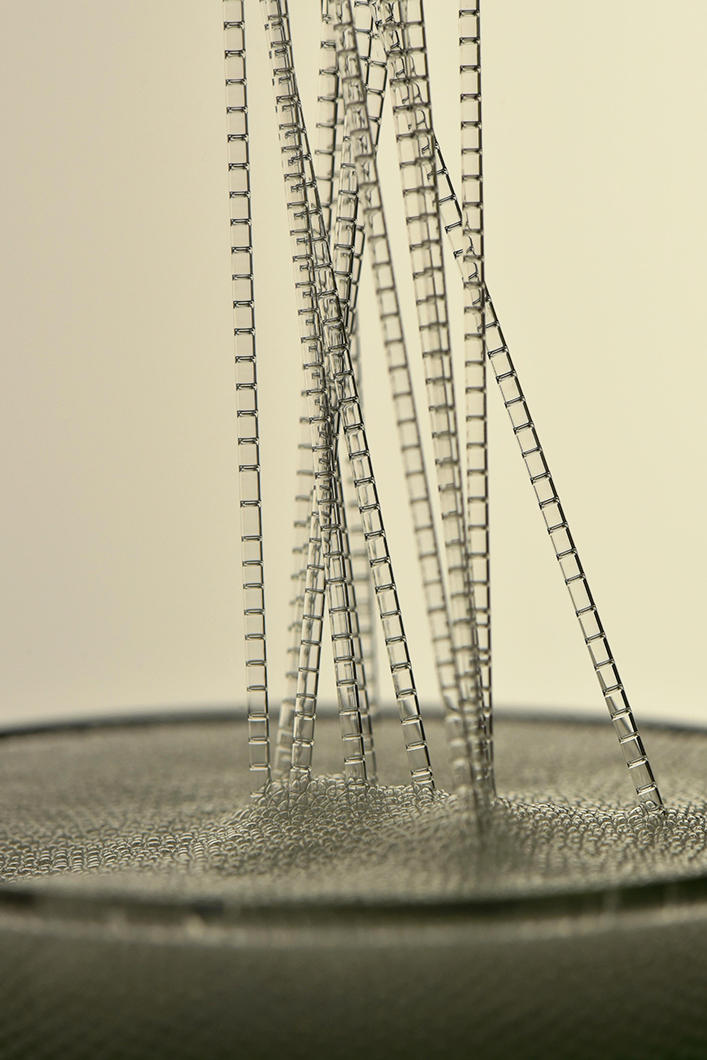
3
Slideshow mode
The fact that a liquid rises in a capillary tube is well-known. This experiment attempts to take a fresh look at the phenomenon. For their laboratory bamboo grove, the scientists created a foam in a glass
by bubbling air through a soap solution. Since the bubbles are at a higher pressure than the atmosphere, they readily rise up the glass tubes one by one, each forming a lamella. However, the more the bubbles accumulate, the slower each new one entering the tube goes up. The aim is to investigate how foam confinement affects its flow, and more specifically the dissipation mechanism, located in the liquid channels connecting the soap films and the tube wall. Understanding this may be of help in applications using foams such as cleaning, especially of porous materials.
Fr. Boulogne, A. Commereuc/LPS
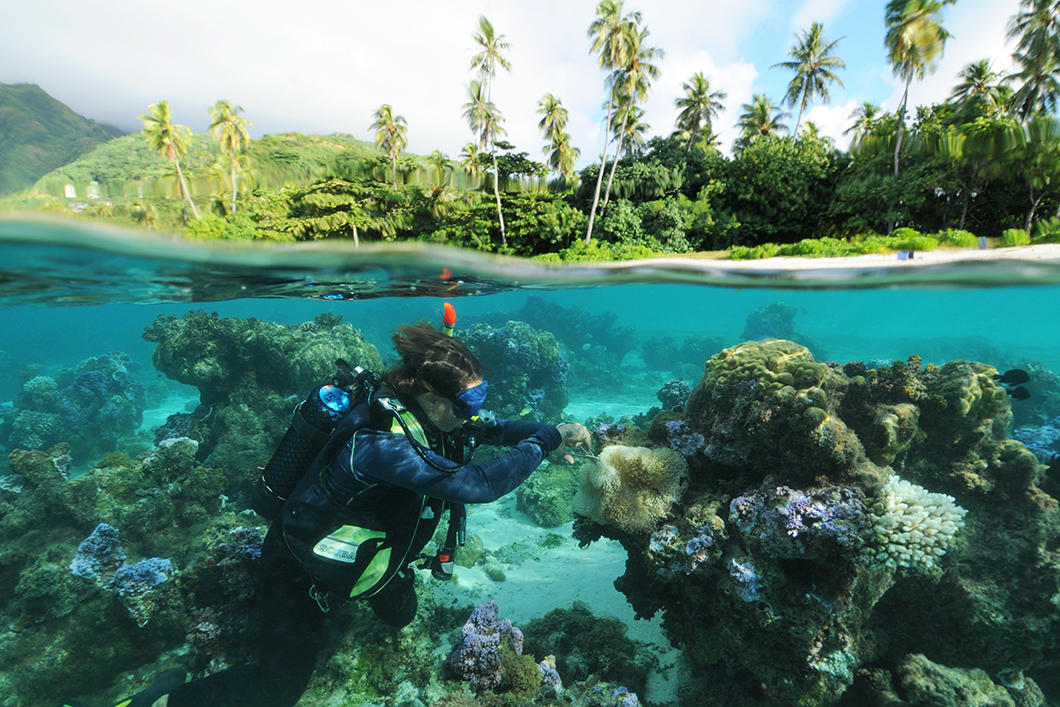
4
Slideshow mode
A scientific diver collects a tentacle from anemones bleached by rising ocean temperatures in Moorea, French Polynesia. Warming of just a few tenths of a degree leads to the bleaching of tropical corals and sea anemones: they lose the colourful symbiotic algae that are essential for their survival. As symbionts of these marine invertebrates, clownfish are also impacted: living in a bleached anemone is stressful, and has negative impacts on fertility and physical condition. The purpose of the sampling is to identify the bacteria associated with the anemones and with the mucus of the clownfish, as well as the defence and resilience mechanisms activated in the microbiome to adapt to these changes.
A. Haguenauer, F. Zuberer/CRIOBE

5
Slideshow mode
This Cape fur seal has just given birth: the pink umbilical cord of her pup is still visible. She moves her baby by throwing it in the air in order to keep it away from other females in the colony, which might become very aggressive towards this little stranger if he came near them. A rather harsh, but necessary, start to life! The species forms huge, dense colonies in Namibia, where females give birth to a single pup that they nurse for 10 to 11 months. Throughout the lactation period, the young seal is exposed to long, repeated absences of its mother, who heads out to sea to feed. To be sure that their pups recognise them when they return to the noisy colony, the females wait until their offspring has fully learned to identify their voice before setting off for the first time.
I. Charrier/ NeuroPSI

6
Slideshow mode
Looking at the living world, its shapes, materials and structures, can inspire the materials of tomorrow. Take this cuttlefish bone, whose unique features are revealed under the microscope. Its microstructure, arranged in layers, columns and undulations, gives it remarkable properties, such as a high degree of rigidity despite very low density–with porosity of around 93%. Rather than suddenly breaking when struck, cuttlefish bone, which is made up of the calcium carbonate mineral aragonite, is instead able to absorb a large amount of mechanical energy. This damage tolerance could prove very useful in the design of future bio-inspired materials, such as ceramic foams, for the protection of people and property.
L. Le Barbenchon/I2M

7
Slideshow mode
The embryonic development of lymph nodes, small organs that are essential for the immune response, is now well understood. Using light-sheet microscopy, scientists were able to determine
the processes at work in this 13.5-day-old mouse embryo. Shown in blue are the lymphoid cells (LTi), derived from the haemogenic endothelium, a tissue specific to the embryo. They move into the
liver where they multiply and then migrate to the rest of the body, where they give rise to the lymph nodes. The 3D information obtained is used to track the interactions of the lymph nodes with their environment, in particular with nerve cells, in green, and blood vessels, in white. Lymphatic endothelial cells and some macrophages are displayed in red.
C. Siret, S. van de Pavert/CIML

8
Slideshow mode
Glioblastoma is a brain tumour whose aggressive nature can be attributed to tumour stem cells. These cells, which are responsible for resistance to treatment, have the ability to form neurospheres and can enter neural differentiation pathways under certain culture conditions. Stem cells derived from human glioblastoma, clustered together in a neurosphere, can be seen in the image due to the labelling of the cell nuclei in blue. Through the action of growth factors, they adhere, migrate and differentiate, forming a ring around the initial sphere. As the cells move further away, they develop a phenotype similar to that of astrocytes, in green, or neurons, in red. The aim of such cell models is to optimise treatments and test new therapeutic approaches.
C. Delmas, E. Cohen-Jonathan, L. Ligat/CRCT

9
Slideshow mode
Artificial intelligence can now be used to detect milk contamination quickly and easily. Certain bacteria such as Pseudomonas fluorescens can contaminate milk during the bottling process. As a result, the
milk has to be incubated for several weeks to ensure that it is sterile before being sold. With Red One technology, microorganisms can be detected after only 48 hours of enrichment in the bottle. The sample is deposited and filtered automatically on a membrane. An algorithm is then used to identify any microorganisms present and to monitor them over time. This process is also used to determine the potability of water and the sterility of pharmaceutical products such as vaccines and drugs.
L. Lo Giudice, P. Silberreiss/iCube/ Redberry
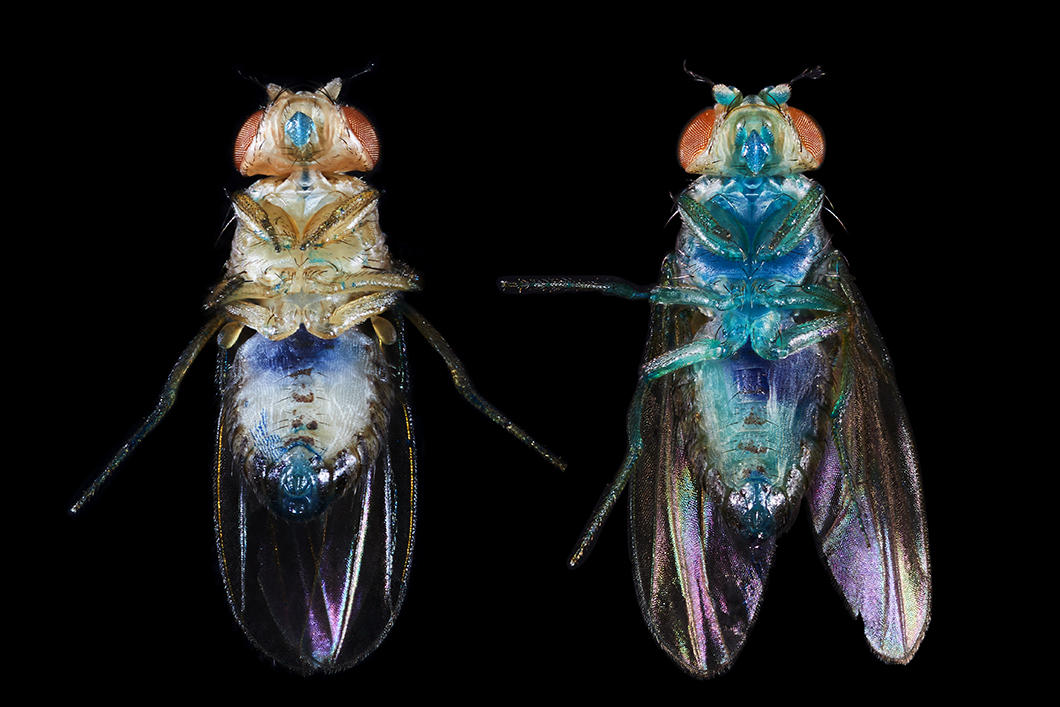
10
Slideshow mode
In both flies and humans, mortality increases with age. This is one of the possible definitions of “ageing”. However, the nature of this phenomenon, as well as its molecular or evolutionary origins, are
still the subject of much debate. Both these female Drosophila melanogaster have the same chronological age and genotype. However, the life expectancy of the fly on the right is around three days, as compared to over twenty days for the one on the left. The former has reached the Smurf state, a transition identifiable in vivo by means of a blue dye that crosses the intestinal barrier only in individuals that will soon die. These predictive biomarkers for the occurrence of natural death can be used to study the effects of time and of physiological age separately. Will this type of approach enable us one day to predict our own death?
M. Rera, A. Colibert/B2A-IBPS

11
Slideshow mode
If you think this picture looks a bit blurry, try putting on a pair of 3D glasses, and you’ll be able to see it in relief. The photograph was produced using the anaglyph method, in which two images
are superimposed, one in red, the other in cyan: the slight offset between the two creates the impression of depth. Featured here are stacked copper nanostructures, a metal that is a promising candidate for converting the billions of tons of CO2 that we release into the atmosphere every year into potential resources. To achieve this, researchers have developed copper-based catalysts like this one. These can efficiently convert CO2 into carbon monoxide (CO) and ethylene (C2H4), basic molecular building blocks that can be used by the petrochemical industry, and as fuels.
B. Rebière, D. Voiry/ICGM

12
Slideshow mode
Close-up view of a surface representing hyperbolic space and its boundary at infinity. The existence of such a surface was predicted by the mathematician John Nash in the 1950s. It has now actually been constructed, with the help of computers, by a team of scientists, who are attempting to visualise paradoxical mathematical objects. This surface, resulting from an infinite entanglement of corrugations (or folds), has an astonishing property: the shortest path between a point on its sinuous edge and any other point on this surface is infinitely long. Visualisations of this kind make it possible to explore a new geometry, half-way between that of fractals and that of ordinary surfaces: the geometry of smooth fractals.
V. Borrelli, R. Denis-ICJ/Fr. Lazarus-G-SCOP/M. Theillière-Univ. Luxembourg/ B. Thibert-LJK

13
Slideshow mode
Sea foam on the sand, a spoon in a chocolate mousse, a cosmetic cream applied to the skin: although foams are found everywhere, they are still poorly understood. Using air, some soapy water and
a recipient with a rugged inner lining, this experiment aims to understand the mechanisms at work when a foam comes into contact with a rough surface. The separation between two bubbles is marked by a soap film; when three of them join up they form a Plateau border (in grey); and when the latter meet in fours they create a vertex (the bright spots). By dipping a glass slide into this dry liquid foam, the scientists are attempting to measure the force exerted on the plate and capture the movement of bubbles in contact with the recipient.
A. Commereuc, F. Boulogne, E. Rio/ LPS

14
Slideshow mode
Rotors are used in many applications to exchange energy between a mechanical system (vehicle, turbine) and the surrounding fluid (such as air or water). This image shows the extreme deformations of a small rotor fitted with two flexible polyethylene blades when operating in water. Depending on the frequency of rotation, the speed of the incident flow and the inclination of the blades, large- amplitude deformations may appear in either direction, affecting its performance. In a liquid, this phenomenon can be very pronounced since the forces are proportional to the density of the fluid. Studying these surprising behaviours could lead to possible improvements for tidal turbines and underwater drones.
A. Eldemerdash, T. Leweke, S. Le Dizès/ IRPHE
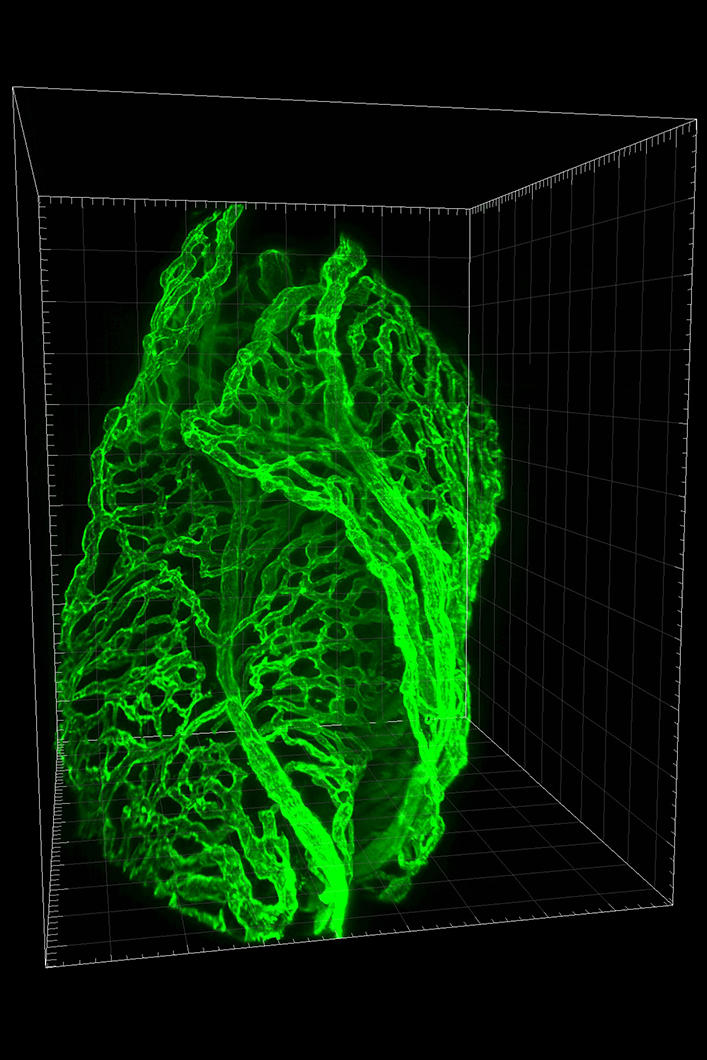
15
Slideshow mode
Choroid plexuses secrete the cerebrospinal fluid in which the brain is immersed. The cells that make them up form a barrier between the blood and the brain, preventing certain toxic molecules from entering it. The remarkable vascularisation of part of a choroid plexus, taken from a 9-day-old rat, can be seen here by means of green immunofluorescence. The researchers are investigating the ways in which immune cells can enter the brain in the event of infection, for example during childbirth. Although the labelling of monocytes, white blood cells present in the blood, has been removed, this 3D visualisation makes it possible to understand the essential role played by the choroid plexus in the proper functioning of the brain.
S. Blondel/CNRL
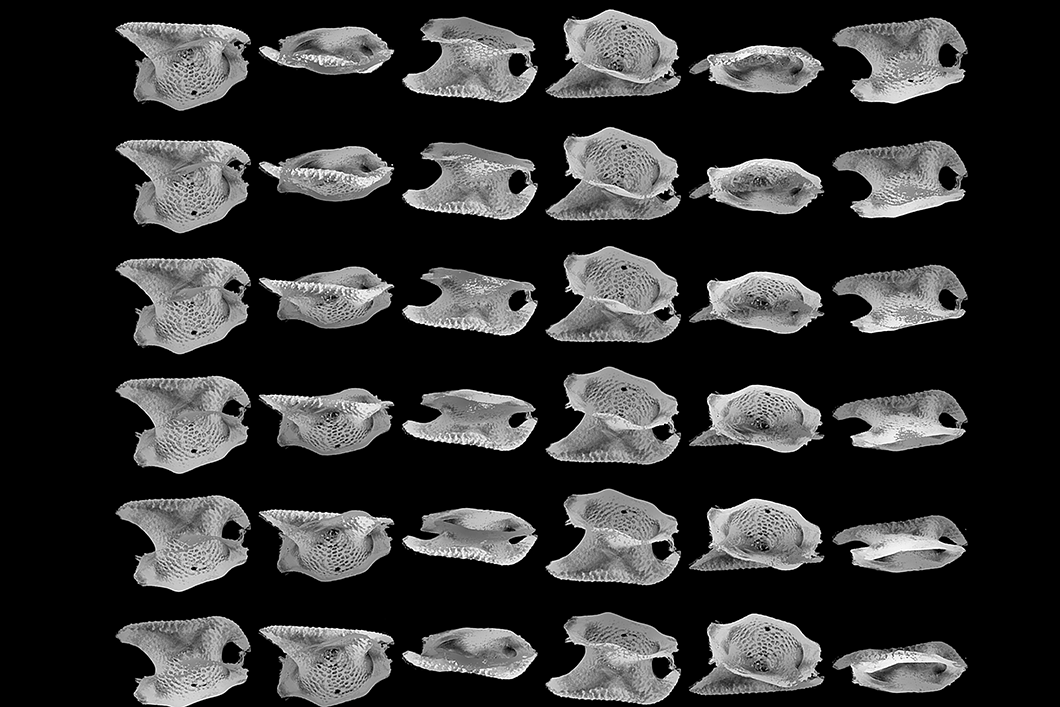
16
Slideshow mode
Ostracods are microscopic crustaceans, most of them no larger than a grain of sand. This specimen of Havanardia societatis comes from a lagoon in French Polynesia and has valves with impressive lateral extensions that are specific to this species. It belongs to a major family that has lived for some 500 million years in marine environments ranging from coastal areas to the ocean depths. Fragile yet resilient, ostracods have survived the five mass extinctions that have punctuated the history of life. Using 3D reconstructions, anatomical comparison between present-day and fossil forms helps to characterise and understand them better, making these crustaceans an important tool for studying changes in biodiversity and environments.
M.-B. Forel, N. Poulet-Crovisier/ CR2P, L. Korat/ ZAG, Slovénie

17
Slideshow mode
Although you’re more likely to come across Podospora anserina on herbivore dung, this version coloured in the Andy Warhol style could well end up in a museum. Forced here to grow in two dimensions, this microscopic filamentous fungus exhibits a network of hyphae (the filaments) extending over several tens of millimetres. Such a configuration, typical of this type of organism, is thought to enable it to optimise the transmission of information as well as the management of nearby reserves, which are vital to its growth in a frequently hostile environment. In order to elucidate the formation of this network and its growth process, the scientists subject it to external constraints – thermal, nutritional, and mechanical stress – for the purpose of predictive modelling.
C. Bobée, F. Chapeland-Leclerc, E. Herbert, G. Ruprich-Robert, P. David, C.Ledoux, E. Cabet / LIED
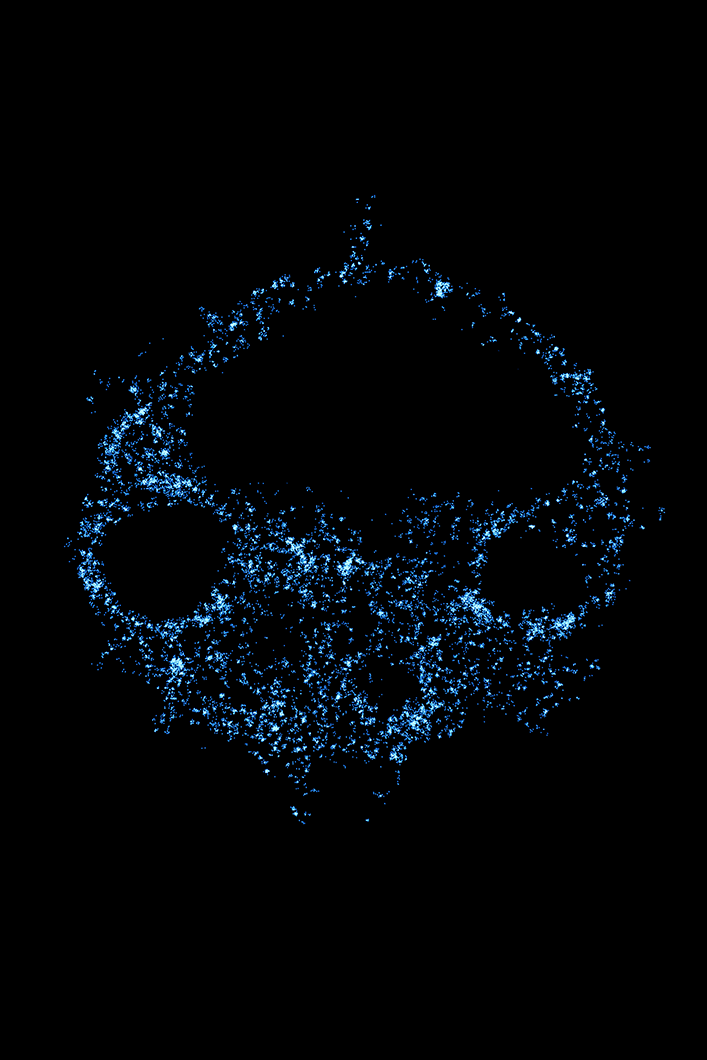
18
Slideshow mode
Autophagy is a survival pathway specific to the cell: it enables the destruction of intracellular pathogens, as well as access to a nutrient reserve through the recycling of the cell membranes. If this process is not well-balanced, it can cause the cell to die. The image shows the RUFY3 protein, which is involved in the autophagy mechanism, in a mouse macrophage – an immune system cell responsible for the phagocytosis of foreign bodies. The presence of these molecules is shown in blue, according to their intensity, forming a skull-like pattern that reflects the internal struggle for survival taking place in each cell. This research aims to shed light on how this mechanism works, and makes it possible to observe how a cell can successfully withstand a hostile environment.
R. Char, R. Fabre / CIML

19
Slideshow mode
In humans, Bethlem myopathy results from mutations in the gene encoding collagen VI, a component of the skeletal muscle extracellular matrix. This rare disease is characterised by muscle retractions and weakness, and a progressive worsening of symptoms, ranging from motor impairment to respiratory failure. The zebrafish is the only animal model that specifically reproduces one of the most common mutations found in patients. It is used to understand the functions of this collagen in the genesis and progression of the disease. This adult zebrafish head has been rendered transparent and labelled for collagen VI, in yellow. The combination of this labelling with the autofluorescence of the structures, in blue, reveals its gills, conjuring up the majestic plumage of the blue-and-yellow macaw.
C. Exbrayat-Héritier/ IGFL
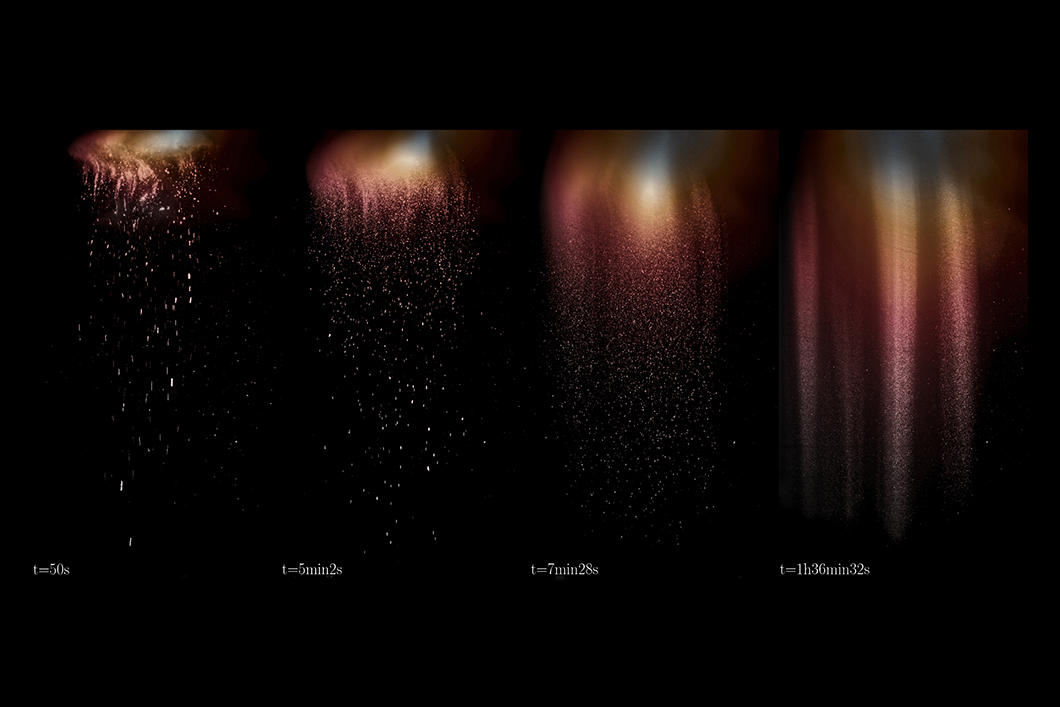
20
Slideshow mode
How is it that small rocky planets such as Mercury or Ganymede, one of Jupiter’s moons, have a magnetic field? It could be due to to “snow” made up of flakes of iron. In the interior of these planets, the flakes, falling from the outer reaches of the liquid core to its centre, could cause turbulence that might potentially generate a magnetic field. To investigate this process, the researchers modelled iron snow in a tank of fresh water using glass beads – as fine as flour – to which they added an orange dye. Initially, a few large flakes fall out of the cloud at high speed. But, as time goes by, billions of small ones slowly fall in continuous streams. The sinking of the dye reflects the impact of snow flakes on their environment.
Q. Kriaa, B. Favier, M. Le Bars / IRPHE
Explore more
Life
Article
11/26/2025
Article
11/24/2025
Article
09/24/2025
Article
09/01/2025
Article
08/07/2025
Photography
Slideshow
01/18/2024
Slideshow
10/18/2021
Slideshow
09/24/2019
Article
08/23/2018
Acfas
Slideshow
01/18/2024
Slideshow
09/24/2019
Slideshow
01/18/2017


